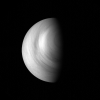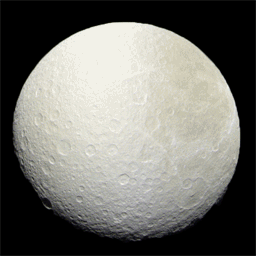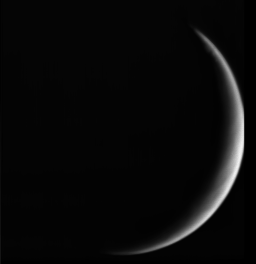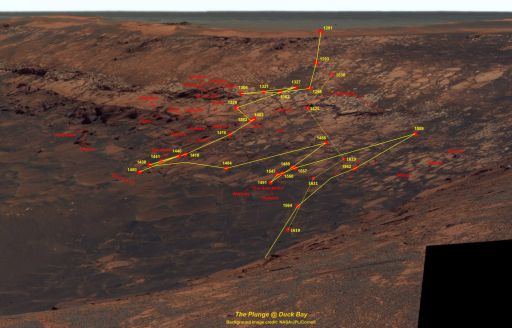Emily Lakdawalla • Aug 25, 2008
What's up in the solar system for the week of August 25
Well, we had a lovely family vacation at the beach and I managed to keep from doing any work. The same can't be said for my computer: I gave it plenty of work to do, downloading the complete set of Venus Express camera data, which was just last week released to ESA's Planetary Science Archive. It took four days, but it's done! If you don't share my love of raw data, skip the next paragraph...
I have posted a page that serves as an overview of a third of the Venus Express VMC data. These are the images taken through an ultraviolet filter, which nicely showcase Venus' clouds. (Actually, technically, it's taken through the ultraviolet objective -- VMC has four separate objectives, each of which is allotted a corner of a single CCD; the objectives are fitted with four different filters, one in the ultraviolet, one in visible wavelengths, and two in near-infrared wavelengths.) At present this is just a browse page, with thumbnails only (though I do provide the links from which you can FTP individual PDS formatted files, for those of you who know what that means). It will be a few days before I'll be able to convert all the data to a more readily useable format.

ESA / MPS, Katlenburg-Lindau, Germany; animation by Emily Lakdawalla
Approaching Venus
A quick view of part of a Venus Express orbit, captured through the Venus Monitoring Camera (VMC)'s ultraviolet channel. The images were taken about an hour apart as the spacecraft approached Venus. Venus Express' orbit is polar and highly elliptical, with its closest approach near the north pole, so it spends a great deal of time over the south pole. The orbit is exactly 24 hours long, which is designed as a cost-controlling measure; Venus Express can always communicate with Earth from the same position on its orbit and use ESA's own deep-space radio communication antenna in New Norcia, Spain.Big news to look forward to next week is the encounter of Rosetta to asteroid 2867 Steins, now only 11 days away. The first images resolving the asteroid are expected to be shown on Saturday, September 6, at a press event at the European Space Operations Centre at 12:40 CEST (10:40 UTC); hopefully they'll be released on the Internet concurrently with that. There are already images on Earth showing that Rosetta is tracking Steins just fine. Check the science timeline to see what's happening every day, and watch Daniel Muller's website for a realtime countdown of events.

ESA ©2007 MPS for OSIRIS Team MPS / UPD / LAM / IAA / RSSD / INTA / UPM / DASP / IDA
Spotting Steins
As Rosetta approached for its Steptember 5, 2008 flyby of asteroid 2867 Steins, its OSIRIS high-resolution camera spotted the faint object against the background of stars. This animation cycles between two images taken on August 7 and 11, 2008.
NASA / JPL / SSI / color animation by Gordan Ugarkovic
Eclipse of Rhea by Saturn
On August 19, 2008, Cassini observed Rhea as it passed into Saturn's shadow. These eclipses are becoming more frequent as Saturn's equinox approaches. Cassini's science team is particularly interested in using the eclipses to study how the temperature of the icy surface drops after its quick plunge into darkness, and, later, how quickly it heats when the lights come back on again.I lack time to explore last week's orbiter releases, so I'll just point you over to the Mars Reconnaissance Orbiter HiRISE and Mars Odyssey THEMIS new image websites.MESSENGER is just 41 days and 41 million kilometers from their second Mercury flyby. New Horizons is 10.4 AU from Earth and 20.8 AU from Pluto. I don't have any news on the activities of Chang'e 1, Kaguya, Voyager 1 and 2, Deep Impact, Stardust, or Dawn. Genesis is in hibernation, and Ulysses appears to still be alive; you can hear an update on that in this week's Planetary Radio.
Support our core enterprises
Your support powers our mission to explore worlds, find life, and defend Earth. You make all the difference when you make a gift. Give today!
Donate

 Explore Worlds
Explore Worlds Find Life
Find Life Defend Earth
Defend Earth



